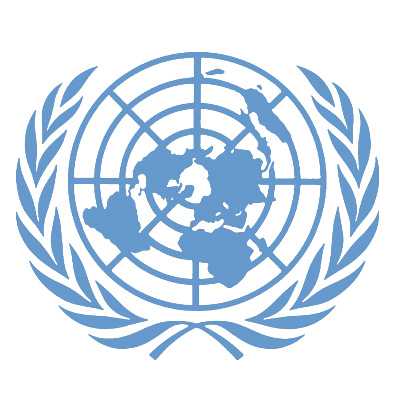
The international agricultural research system of the CGIAR is undergoing a large transformation. A recent
Progress Report No. 4 "presents interim findings and proposals of the Strategy Team for review and discussion."
The proposed 'Strategy and Results Framework' introduces seven interlinked Mega Programs and two platforms — gender and capacity strengthening - that will serve as the building blocks for the work of the 'new' CGIAR.
How do information, knowledge, ICTs and related areas fare in these proposals?
Mega-Program 3 is titled 'Institutional Innovations, ICTs, and Markets.' Its focus will be on: "Knowledge to inform institutional changes needed for a well-functioning local, national, and global food system that connects small farmers to agricultural value chains through information and communications technologies and facilitates policy and institutional reforms."
This mega program "aims to unleash an ― institutional and information revolution - with and for farmers and the rural poor that improves and secures their livelihoods, and also promotes innovation along value chains." It speculates that the "next big breakthrough in institutional innovation to be unleashed in support of poverty reduction, food and nutrition security, and environmental sustainability" might include: "linking of information and communications technologies (ICTs) to value chains and services for the poor in rural areas, through, for example, the cell phone and its increasing range of sophisticated derivatives."
Within Mega Program 1 on 'Crop Germplasm Conservation, Enhancement, and Use', a program is envisaged to "integrate bioinformatics and crop information systems."
These proposals seem to recognize the importance of knowledge and information as well as ICT applications and tools within both CGIAR research processes and the agricultural nnovation systems where organizations doing research and development interact. Hopefully, it will boost scattered efforts to increase research uptake, interaction and collaboration using ICTs and other innovative approaches to knowledge sharng and communication. It would usefully also emhpasize the potential for co-creation of knowledge and information among the partners.The cross-cutting 'capacity-building platform' will "strengthen the capacity of the CGIAR and its partners through improved research networks, information technology, knowledge management systems, and training. The expected result is a dynamic knowledge creating and -sharing system comprising CGIAR centers, strong independent national agricultural research systems, and other research partners sharing knowledge."
The capacity strengthening role of the CGIAR is recommeded to "have two purposes: strengthening capacity for all Mega Program partners by fostering research collaboration and networking, and strengthening capacity for weak national agricultural research systems."
"An important element of both activities will be the development and use of advances in information and communication technologies (ICTs) and knowledge management and innovation systems, including access of Mega Program partners to applications and resources such as databases."
These proposals seem to include work by CGIAR centers to make their data, information and knowledge accessible (see recent work on AAA and CIARD), so often limited-access knowledge is freed to be exchanged and re-used. Hopefully, they will not forget the importance of open licenses such as creative commons, and open access in general. The 'public goods' need to be made public!Under a heading 'Communications Strategies,' the document also argues that "research programs have no impact without communications: innovations, research results, policy assessments, and policy recommendations are useless if they are not communicated to those who can use them."
They suggest an 'umbrella communication strategy' that will "make clear what the CGIAR’s vision means in concrete terms and what the new CGIAR will do to achieve its visionary goals."
Each Mega Program will therefore have a "defined communications strategy that outlines the key messages to be conveyed, the key target groups, and the media and channels for communicating with the key target groups." To maximise synergies, "the mega program communications strategies will be coordinated with the umbrella communications strategy for the vision."
Building communications - as well as information access and knowledge sharing - into each Mega Program seems very sensible. Let's hope the designers adopt the DFID Research approach that calls for 30% of a project's funding to be be allocated to communication and uptake.Labels: aaa, aginfo, cgiar, en, ICT, knowledge_sharing, research, science
 This book by Microsoft Research argues that "scientific breakthroughs will be powered by advanced computing capabilities that help researchers manipulate and explore massive datasets.
This book by Microsoft Research argues that "scientific breakthroughs will be powered by advanced computing capabilities that help researchers manipulate and explore massive datasets.
 The international agricultural research system of the CGIAR is undergoing a large transformation. A recent
The international agricultural research system of the CGIAR is undergoing a large transformation. A recent  The United Nations has partnered with the scientific publishing industry to provide research institutions in least developed countries free access to online journals, the UN World Intellectual Property Organization (
The United Nations has partnered with the scientific publishing industry to provide research institutions in least developed countries free access to online journals, the UN World Intellectual Property Organization ( According to a new report by the National Academy of Science, "maintaining the integrity and accessibility of research data in a rapidly evolving digital age will take the collective efforts of universities and other research institutions, journals, agencies, and individual scientists."
According to a new report by the National Academy of Science, "maintaining the integrity and accessibility of research data in a rapidly evolving digital age will take the collective efforts of universities and other research institutions, journals, agencies, and individual scientists." "Cell Press and Elsevier have launched a project called
"Cell Press and Elsevier have launched a project called  In London this week, some 900 people have signed up for the
In London this week, some 900 people have signed up for the 
 Through Twitter, just came across fascinating blog post from leading science writer and blogger
Through Twitter, just came across fascinating blog post from leading science writer and blogger 

 The Australian Centre for International Agricultural Research just published a training manual entitled '
The Australian Centre for International Agricultural Research just published a training manual entitled '


